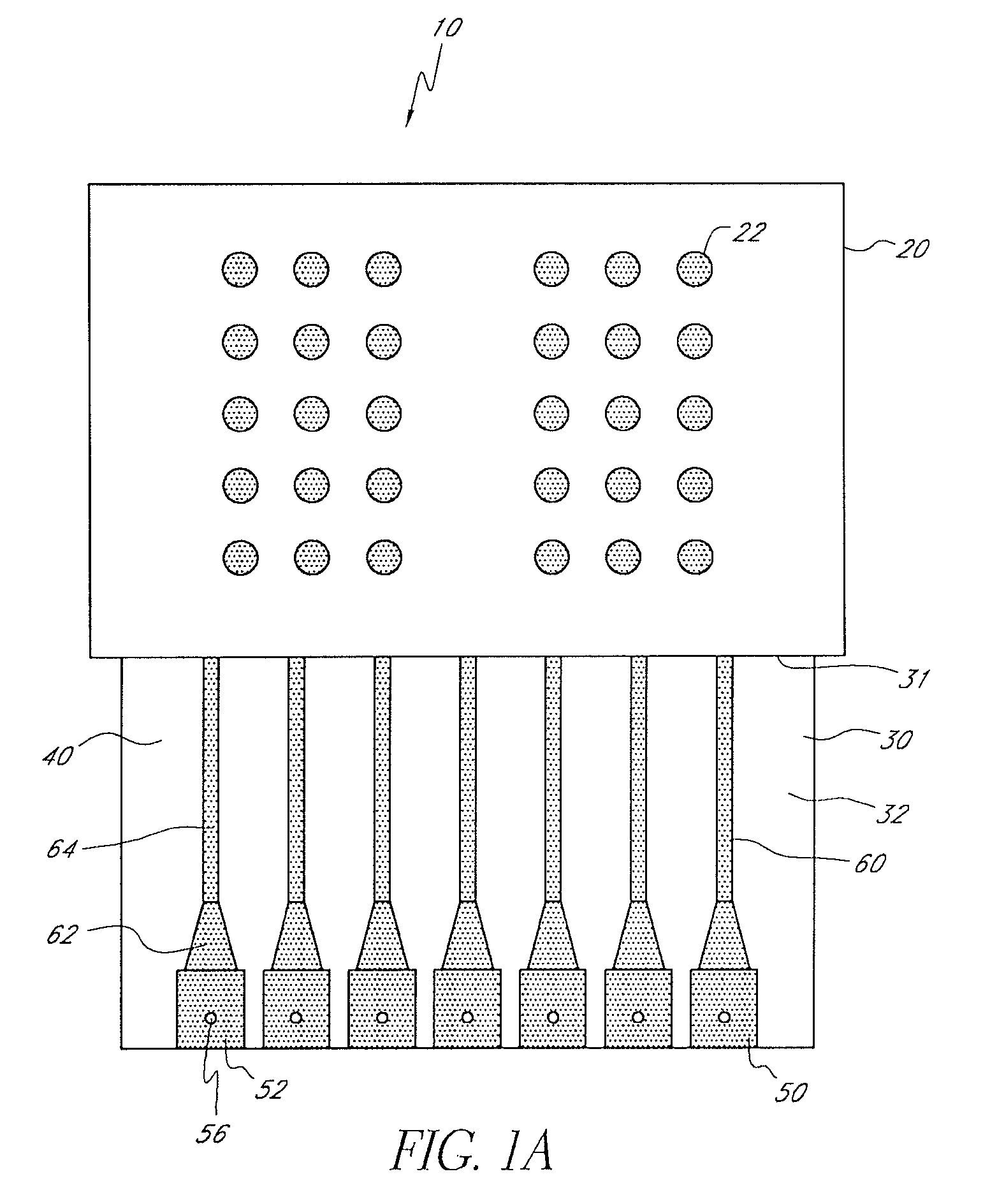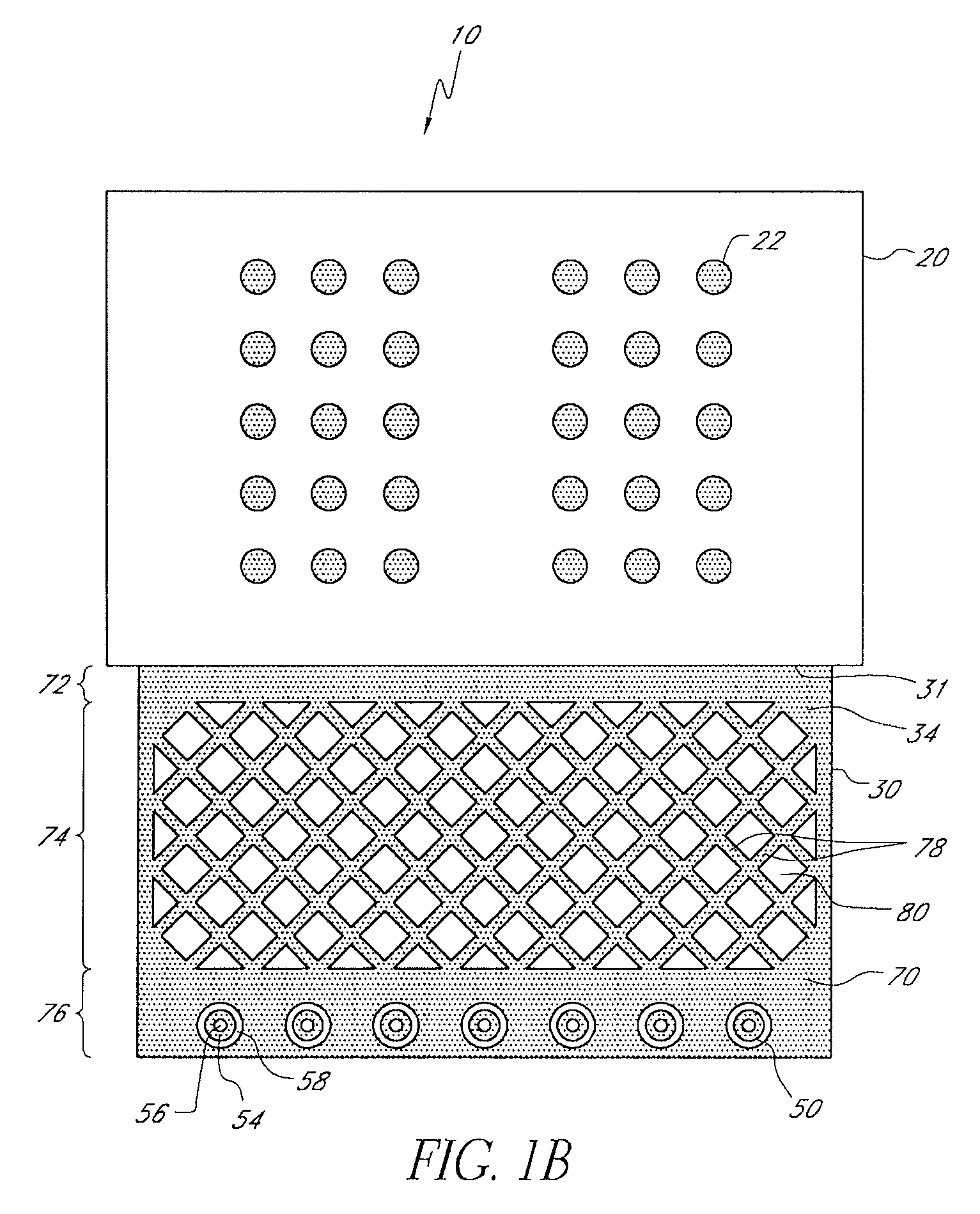Circuit with flexible portion
a flexible circuit and circuit board technology, applied in the field of electronic circuitry and modules, can solve the problems of generating significant amounts of heat for all components, complicated connections to the pcb in close proximity, and the characteristics of flexible circuitry, so as to and improve the flexibility of the flexible connector
- Summary
- Abstract
- Description
- Claims
- Application Information
AI Technical Summary
Benefits of technology
Problems solved by technology
Method used
Image
Examples
Embodiment Construction
[0035]FIGS. 1A-1C schematically illustrate three views of an example circuit card 10 compatible with certain embodiments described herein. The circuit card 10 comprises a rigid portion 20 having a first plurality of contacts 22 configured to be in electrical communication with a plurality of memory devices (not shown). The circuit card 10 further comprises a flexible connector 30 coupled to the rigid portion 20. The flexible connector 30 has a first side 32 and a second side 34. The flexible connector 30 comprises a dielectric layer 40 and a second plurality of contacts 50 configured to be in electrical communication with a substrate (not shown). The flexible connector 30 further comprises a plurality of electrical conduits 60 on the first side 32 of the flexible connector 30 and extending from the rigid portion 20 to the second plurality of contacts 50. The plurality of electrical conduits 60 are in electrical communication with one or more contacts 22 of the first plurality of con...
PUM
 Login to View More
Login to View More Abstract
Description
Claims
Application Information
 Login to View More
Login to View More - R&D
- Intellectual Property
- Life Sciences
- Materials
- Tech Scout
- Unparalleled Data Quality
- Higher Quality Content
- 60% Fewer Hallucinations
Browse by: Latest US Patents, China's latest patents, Technical Efficacy Thesaurus, Application Domain, Technology Topic, Popular Technical Reports.
© 2025 PatSnap. All rights reserved.Legal|Privacy policy|Modern Slavery Act Transparency Statement|Sitemap|About US| Contact US: help@patsnap.com



